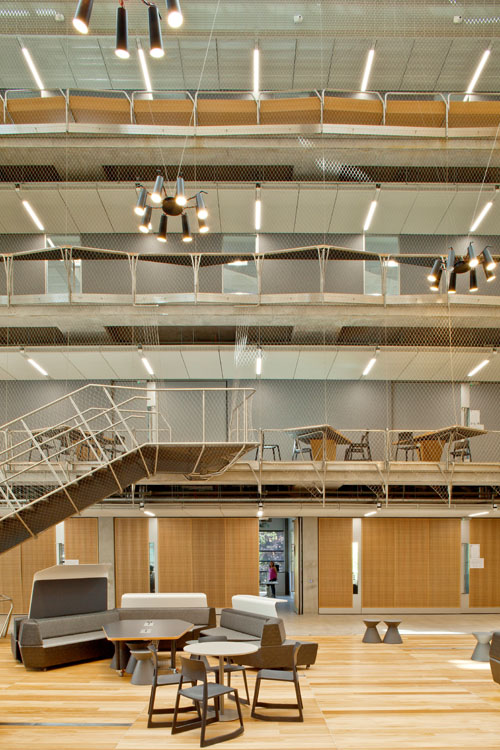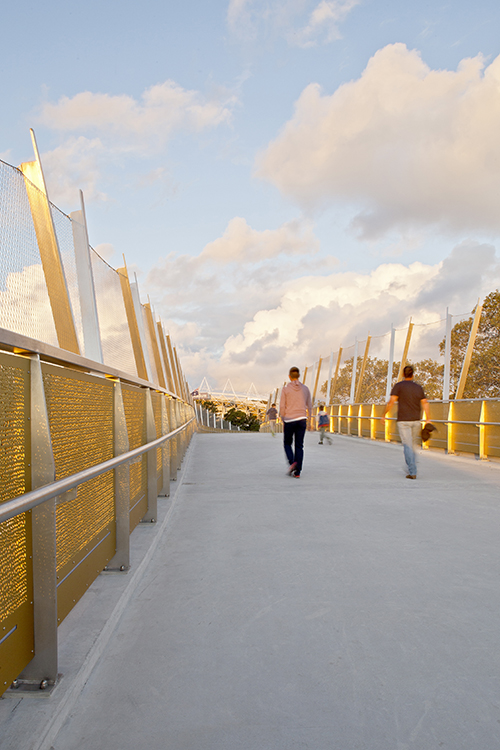The main purpose of commercial balustrades is to provide safety, and the material you choose can made a difference as to how well it performs in that role.
That said, there’s no reason a commercial balustrade cannot be made to look good and contribute towards the architectural design of a project!
In our view, stainless steel wire rope or cable fulfils both functions. It can be used to create commercial balustrades that provide the necessary fall protection and look great at the same time.
Here we take a closer look at stainless steel wire cable for balustrades and how it compares to other options in terms of performance and aesthetics.
Features of wire cable
Wire cable for commercial balustrades is made from marine-grade stainless steel wire rope, which provides it will excellent robustness and weather-resistance. Other features include:
- Excellent longevity – lasting up to 25 years.
- Light thin profile which allows for airflow and entry of natural light and views.
- Can be configured either horizontally or vertically or formed into wire mesh.
- Excellent fire-resistance.
- Requires very little in the way of maintenance and cleaning.
- Can be used as a support structure for climbing or scrambling plants to create an attractive green balustrade.
When configured vertically, stainless steel wire cables can be used to create continuous fall protection over several levels. An example of this is the Monash LTB building atrium, where 5mm wire rope was installed over three levels to create a transparent balustrade. This approach allows for greater use of space as the balustrade is completely non-climbable, which means furniture can be placed right to the edge of the void.
Another example of wire rope for a robust balustrade is the Melbourne School of Design, where wire mesh extends over all five storeys of the atrium. The use of mesh creates a balustrade that is non-climbable as well as transparent and discreet in appearance. While this is an indoor installation, wire mesh is also an excellent material for outdoor balustrades – on bridges for example.

Other material options
Some of the other options for commercial balustrades include glass panels, railings made from steel or timber, and Chainlink.
- Glass for balustrades
Glass offers several benefits for use as a balustrade. This includes a transparent appearance along with good longevity, durability, non-climbability and excellent modularity.
A down-side of glass is that it requires constant cleaning to remove smudges, fingerprints and scuff marks. There is also an extra cost involved to make a glass balustrade fire-resistant – which could make it an expensive option.
While glass can be used to make a transparent balustrade for an internal atrium, any furniture or other climbable items must be placed at least a metre away from the edge. This means the space cannot be fully utilised.
- Steel railings
Railings made from steel are tough and durable and require little in the way of maintenance. In that sense, they can offer a lot in terms of affordability, strength, safety and security. However, where they can fall down is in appearance as they tend to look quite harsh.
- Timber railings
Timber railings can look good and offer a low maintenance option. They are however probably more suited to residential balustrades than commercial, in that they lack the necessary robustness, non-climbability and fire-resistance required of a commercial balustrade.
- Chainlink
Chainlink is a very affordable material that is easy to install, but it has high maintenance requirements and poor longevity. It is also somewhat lacking when it comes to aesthetics.
Need more information?
If you would like to know more about material considerations for commercial balustrades or you have a project in mind already, feel free to get in touch.







































